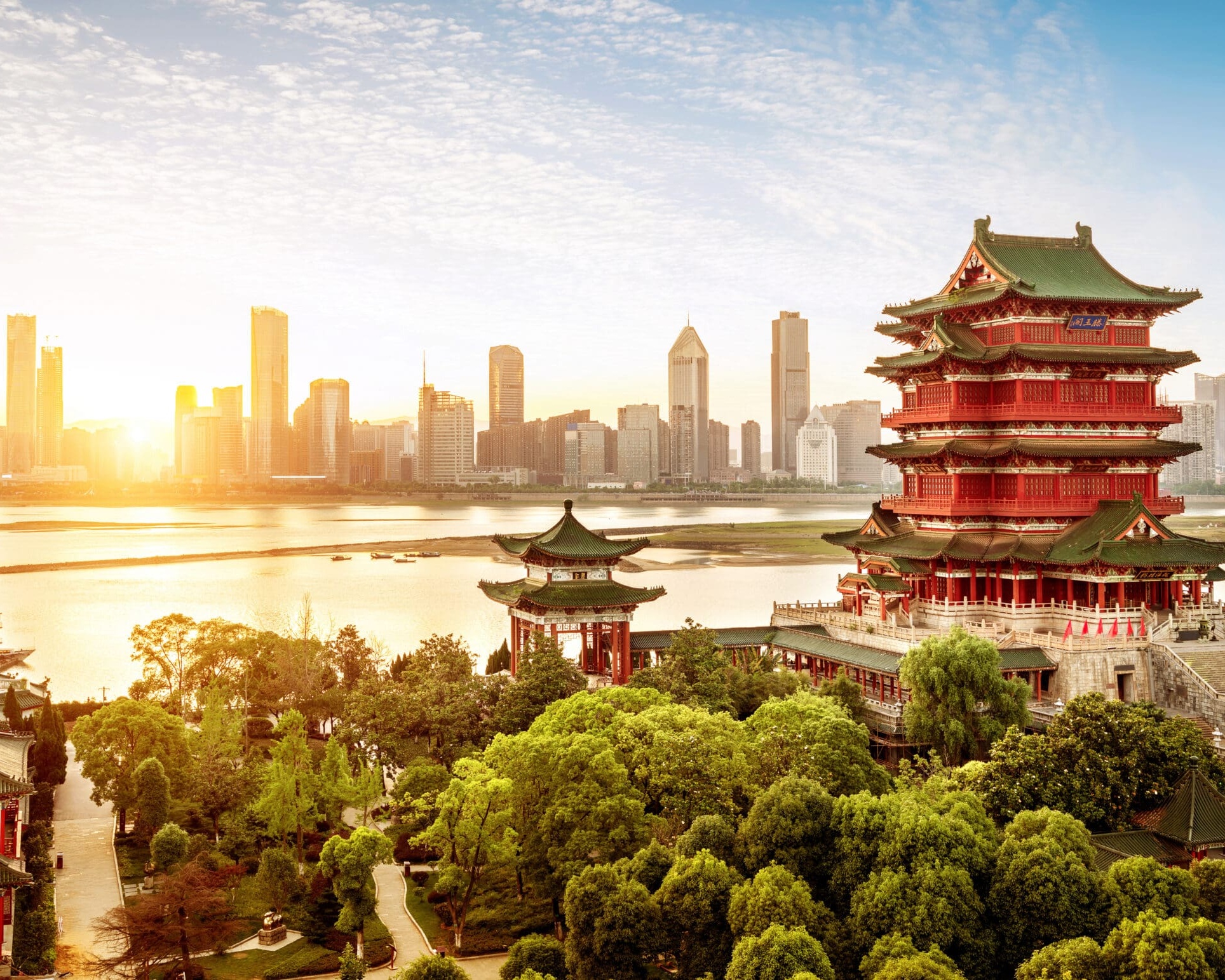Welcome to China, a land where millennia-old history and cutting-edge modernity converge.
From the majestic Great Wall winding through northern mountains to the bustling streets of Shanghai’s futuristic skyline, China offers a journey through time. Immerse yourself in the rich tapestry of culture, cuisine, and traditions that have shaped this vast country.
Explore serene landscapes, from the karst peaks of Guilin to the sacred Tibetan Plateau, and engage with the vibrant life of its cities. Here, every corner reveals new mysteries and every experience enriches your soul.

The Best Time To Visit
The best time to visit China generally falls during its spring (April to May) and autumn (September to October) months. During these periods, the weather is mild and the skies are clear, making it ideal for sightseeing and outdoor activities. This is particularly true for visiting the country’s most iconic attractions, such as the Great Wall, the Forbidden City, and the terracotta warriors in Xi’an, as well as enjoying the natural beauty of places like Guilin and the Yangtze River.
Spring brings blossoming flowers and pleasant temperatures, perfect for exploring both the urban and rural landscapes.
The winter months (November to March) can be quite cold, particularly in the north, but offer the chance to see China’s winter beauty and partake in festivals like the Harbin Ice Festival.
What To Know
In China, the official language is Mandarin Chinese, also known as Putonghua. It’s the most widely spoken language.
Cantonese is another significant Chinese language, particularly prevalent in Guangdong Province and Hong Kong.
For travelers, learning some basic Mandarin phrases can be incredibly helpful, as English proficiency varies widely outside of major cities and tourist areas. Nonetheless, in large cities and places frequented by international tourists, English signs and services are increasingly common.
The currency used in China is the Renminbi, with the primary unit being the Yuan. The Renminbi is used for all transactions within the country, from buying street food to paying for hotel accommodations.
For travelers, it’s advisable to have some cash on hand, especially in smaller towns or for smaller purchases where electronic payments might not be accepted. However, China is rapidly becoming a cashless society, especially in urban areas, with mobile payment platforms like Alipay and WeChat Pay widely used for transactions ranging from taxis to retail shopping.
While these platforms are incredibly convenient, setting them up typically requires a Chinese bank account, which may not be feasible for short-term visitors. Credit cards are accepted in larger hotels, restaurants, and stores, but their acceptance is not as widespread as in some other countries.
China is generally considered a safe country for travelers, with low rates of violent crime. Many tourists and expatriates living in China report feeling secure, even when walking in cities at night. However, like in any country, it’s important to remain vigilant and take standard safety precautions to ensure a smooth and safe experience.
Traffic safety can be a concern. Pedestrians should be cautious when crossing streets, as traffic regulations might not always be adhered to by drivers. If you’re planning to drive, be aware of local driving habits and road conditions, which can vary significantly from those in Western countries.
Regarding health safety, visitors should pay attention to air quality in urban areas, which can fluctuate and sometimes reach unhealthy levels.
Public transport in China is extensive, efficient, and covers a wide range of options, making it convenient for travelers to navigate the country. Major cities boast comprehensive metro systems that are clean, safe, and punctual, with clear signage in both Chinese and English. Buses are also ubiquitous, offering extensive coverage within cities and to suburban areas, though they can be more challenging for non-Chinese speakers due to less English signage.
For intercity travel, China’s high-speed rail network is among the most advanced in the world, connecting major cities across the country quickly and comfortably. Traditional slower trains also serve more routes, including to less accessible areas, providing a more economical option.
Long-distance buses are available for routes not covered by trains, often reaching remote places. However, they vary in comfort and reliability.
Taxis are widely available in cities and can be hailed on the street or booked via apps. Ride-hailing services like Didi Chuxing are popular and offer a convenient way to book rides with English language support available in the app.
In recent years, bike-sharing services have become incredibly popular in urban areas, providing an eco-friendly and convenient transport option for short distances.
While navigating public transport in China is largely efficient, it’s helpful for travelers to have destinations and addresses written in Chinese to show to drivers or when purchasing tickets, and to be prepared for crowded conditions, especially during peak travel times and national holidays.
